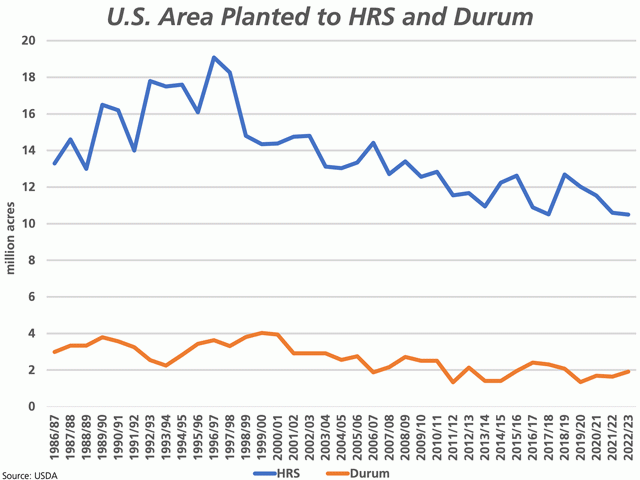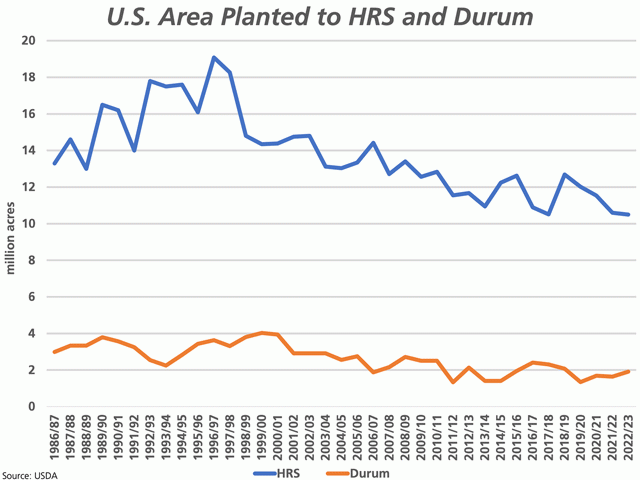Canada Markets
USDA Prospective Planting Report and US Wheat
On March 31, the Globe and Mail published an opinion piece titled "The Ukraine invasion is putting tremendous pressure on the global food supply," written by David Dzisiak. The first sentence stated, "This spring, Canadian farmers will plant the most important crop since the Second World War." (https://www.theglobeandmail.com/…) Of course, the global wheat market gains a great deal of attention, and market watchers hope producers will respond accordingly when they plant spring crops.
Today's USDA Prospective Plantings report shows that wheat continues to face competitive pressure from other crops, as indicated by a year-over-year drop in spring wheat acres forecast to be planted in the United States.
Thursday's report estimated all-wheat acres at 47.351 million acres, which would be the largest acreage seen in four years, a 1.4% increase from 2021. At the same time, the USDA noted this is the fifth-lowest area planted since 2019. This is made up from a 1.7% increase in estimated winter wheat acres, while total area dedicated to spring wheat is estimated at 11.2 ma, down 220,000 acres or 1.9% from 2021 and well below the 11.727 m.a. average of the Dow Jones pre-report estimates.
P[L1] D[0x0] M[300x250] OOP[F] ADUNIT[] T[]
Of these 11.2 ma, 10.5 ma is estimated to be hard red spring wheat, which is down slightly from the 10.596 ma planted in 2021, as shown in USDA tables. According to the other spring acre estimates in today's report, Minnesota is forecast to increase spring wheat acres by 50,000 acres, Montana by 150,000 acres and South Dakota by 10,000 acres, while North Dakota is forecast to see acres drop by 300,000 acres.
In addition to the 300,000-acre drop in North Dakota's spring wheat acres, the USDA also estimated the state's soybean acres down 250,000 acres and corn acres down 500,000 acres from 2021. Smaller crops such as barley, oats, durum and flax are showing a year-over-year increase in area across the state, which bears watching.
Durum acres in the U.S. are estimated at 1.915 ma, up 17% and the highest in four years. Dry conditions will be a factor, with the USDA estimating 86% of the U.S. durum area facing some degree of drought as of March 29, up from the 80% reported over the past four weeks.
Agriculture and Agri-Food Canada's unofficial estimates show a 5% increase in wheat area for 2022 (excluding durum) along with an estimated 9.5% increase in durum acres. AAFC's Principal field crop areas report will be released on April 26.
Cliff Jamieson can be reached at cliff.jamieson@dtn.com
Follow him on Twitter @Cliff Jamieson
(c) Copyright 2022 DTN, LLC. All rights reserved.





Comments
To comment, please Log In or Join our Community .